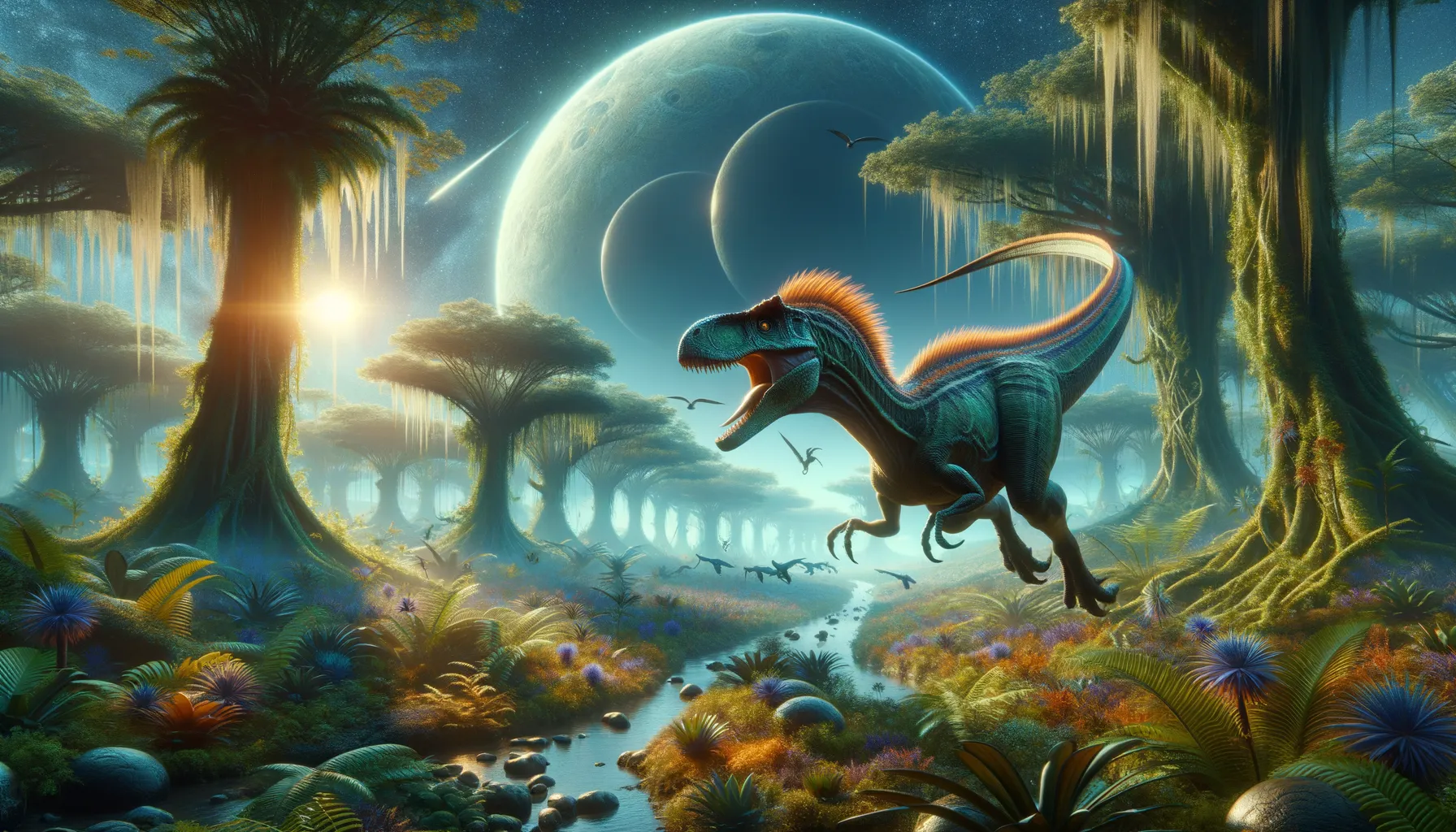
Xixianykus
A swift runner of ancient forests.
Period
Cretaceous
Length
Around 50 centimeters long.
Height
Approximately the height of a small dog.
Weight
Estimated to weigh around 5 kilograms.
Xixianykus was a small, agile dinosaur from the Late Cretaceous period. Its lightweight body and long legs suggest it was built for speed, probably to escape predators or hunt small prey. With a size akin to that of a small bird, Xixianykus is a fascinating example of dinosaur adaptability. Its discovery in China provides insights into the diverse ecosystems that existed during its time.
Diet
Xixianykus was likely an insectivore, feeding on small insects and invertebrates. Its long, slender snout and sharp claws suggest it could dig or pick insects from crevices.
Hunting
Though not a traditional hunter, this dinosaur probably used its speed and agility to capture fast-moving insects. Its quick movements would have made it an efficient predator of small, elusive prey.
Environmental challenges
Living in dense forests, Xixianykus faced the challenges of navigating complex terrain. Additionally, it had to be aware of larger predators that shared its habitat. Seasonal changes would have affected food availability, requiring adaptation to varying ecological conditions.
Speed
Known for its agility, it was quite fast.
Lifespan
Likely lived for several decades, like other small dinosaurs.
First discovery
Discovered in Henan, China, in 2007.
Fun Facts
- Xixianykus was a small, bird-like dinosaur that lived during the Late Cretaceous period, about 85 million years ago.
- This dinosaur was discovered in China and its name means 'Xixia claw', named after the region it was found in.
- Xixianykus was part of a group known as Alvarezsaurids, which are known for their small size and bird-like characteristics.
- It had a specialized build with long legs, suggesting it was a fast runner, possibly to escape predators or catch small prey.
- Xixianykus likely had a diet consisting of insects and small animals, using its long, sharp claws to dig into nests or logs.
- Despite being bird-like, Xixianykus was not capable of flight, but its structure hints at an interesting evolutionary path towards modern birds.
- Fossils of Xixianykus are rare, making each discovery crucial for paleontologists to understand the diversity of dinosaurs.
Growth and Development
Hatching from eggs, Xixianykus juveniles grew rapidly in their early years. This quick growth ensured they could fend for themselves against predators. Like other small dinosaurs, they might have reached maturity relatively fast.
Habitat
Xixianykus lived in a mix of forested and open areas, providing cover and space for foraging. Its environment was likely rich with diverse plant and animal life. This variety of ecological niches supported its insectivorous diet.
Interaction with other species
Xixianykus coexisted with various herbivorous and carnivorous dinosaurs. It likely had to remain vigilant against predator threats. Insects and other small animals formed both its food source and competitors.
Natural lifespan
Its natural lifespan likely extended to over a decade.
Reproduction
Reproduction involved laying clutches of eggs, probably in hidden nests. As a small dinosaur, it might have had several reproductive cycles each year to maintain its population. The parents likely provided some form of protection until hatching.
Social behaviour
Xixianykus could have been solitary, focusing on foraging for insects. However, it might have occasionally formed groups for protection. Its quick movements allowed it to avoid confrontations with larger predators.
Fossil locations
Fossils of Xixianykus have been found in Henan Province, China. These discoveries help paleontologists understand the diversity of Late Cretaceous dinosaur species in Asia. The fossil remains are usually fragmentary, reflecting its delicate bone structure.
